On Friday, September 10, the Metropolitan Transportation Authority's MTA Arts & Design officially unveiled "Every One," one of three pieces in a mosaic art project by artist Nick Cave. The other two pieces — "Each One" at the shuttle entrance and "Equal All" on the station's central wall — will be installed next year. The $1.8 million project was funded by MTA Arts & Design, which is part of a larger $250 million redesign and reconfiguration of the 42nd Street shuttle route.

An MTA worker takes a photo of mosaics on the wall by artist Nick Cave. Photo: Sinna Nasseri/NYT
American sculptor, dancer and performance artist Nick Cave, creator of the mosaic Every One, first came to public attention with his Soundsuits performance in September 2010. Soundsuits are so-called because of the sound they make when the wearer moves. They are traditional religious garments worn in Africa, the Caribbean and Haiti, but Cave has given them a unique twist by using materials such as tree branches, wire, raw fabric, and even human hair. Nick Cave is also no stranger to performing art at train stations in the United States. In early April 2013, he staged a performance of 30 dancers wearing Soundsuits designed to resemble horses in the Vanderbilt Hall of Grand Central Terminal.
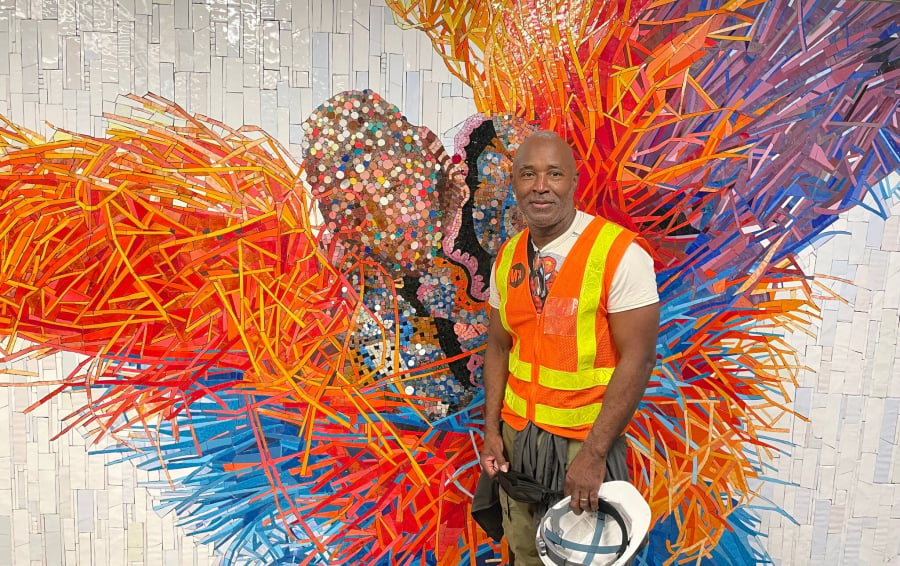
Cave stands in front of one of the glass mosaics - Photo: Cheryl Hageman/ MTA Art & Design
Looking at his work, it is immediately clear that Cave has a very diverse cultural and artistic education background. Issues related to beliefs, rituals, culture, and fashion are an important part that is always present in his work. With Soundsuits, he thinks they help people become anonymous, faceless, escape the constraints of politics, religion, race or gender, enter the realm of dreams and strange things. As for Every One, Cave no longer uses real people to perform Soundsuits, but he turns them into dances engraved on glass, with images of dancers wearing the suits dancing along the wall.
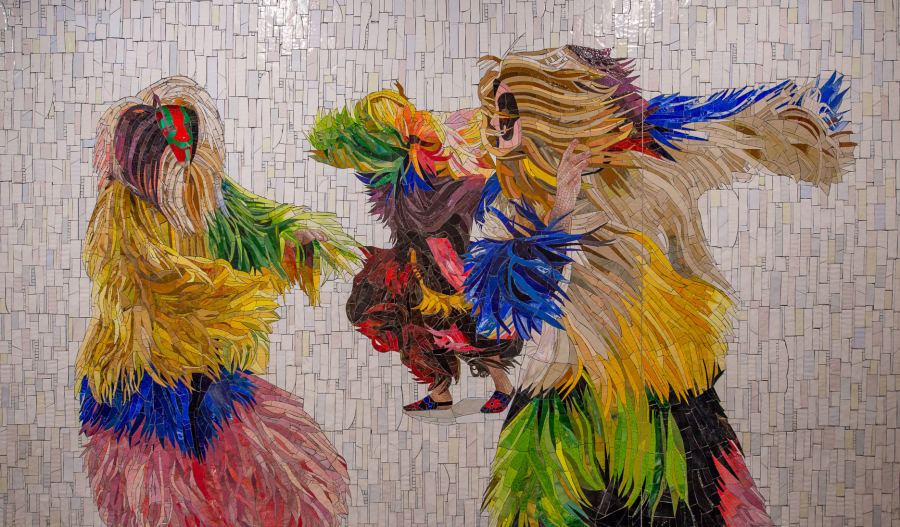
Along the newly built corridor, paintings appear to dance and spin to music in mosaic Soundsuits on the walls (Photo: MTA Art & Design/Trent Reeves)

Photo: Scott Lynch/Gothamist
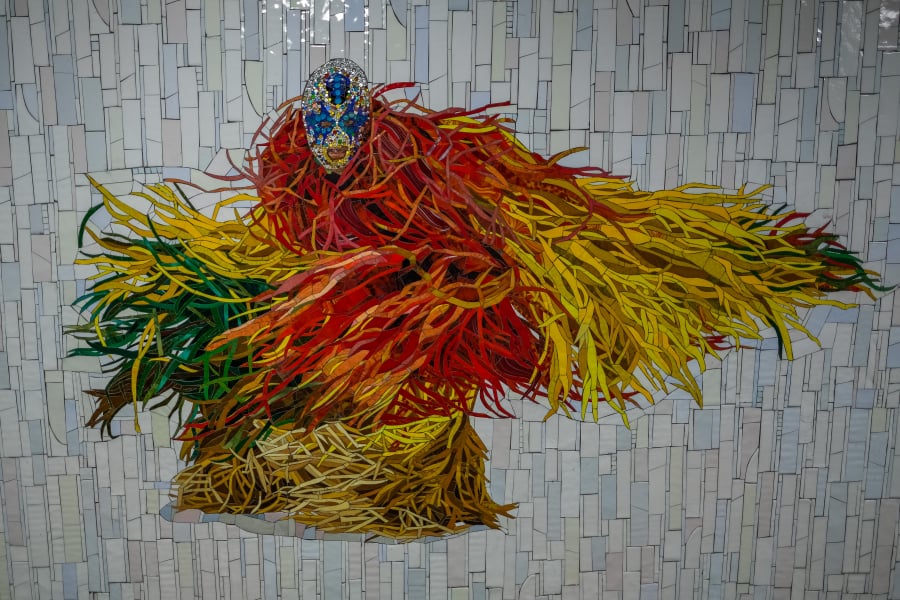
Photo: Scott Lynch/Gothamist

Photo: Scott Lynch/Gothamist
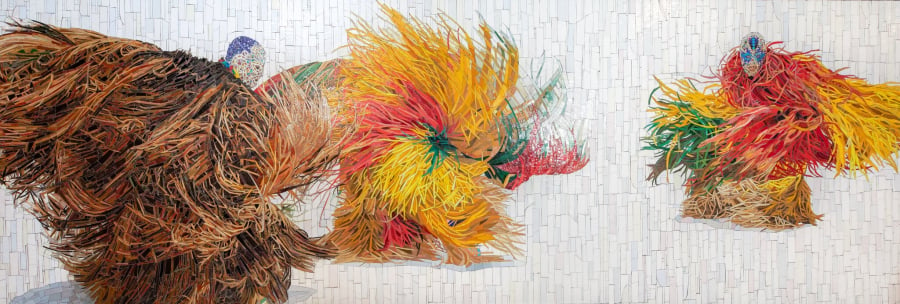
Photo: Sinna Nasseri/NYT
“It’s almost like watching a movie,” Cave said in an interview at his Chicago studio. “As you move step by step, from left to right, you see them moving.”
Since being selected as the performance artist for the subway project in February 2018, Nick Cave has been wondering: How can a Soundsuit that requires constant movement become a static mosaic on the wall? And he was relieved to find the answer: seamlessness.
When Cave visited New York to see the Every One project in early August, he said, "I felt like I was in the middle of the performance, watching it up close and personal. It felt both rushed and different, as the movement of the painting and the continuity of the glass resonated."
“It’s important to be able to use art to remind you of other things, to connect with something,” he adds. “For example, in a mosaic in this hallway, there’s a pair of sneakers. And that detail brings the work to this city, it’s here, right now.”

Photo: Sinna Nasseri/NYT
From beneath a pink raffia cape meticulously hand-inlaid with glass pieces, a pair of modern sneakers in salmon, white, and chestnut brown emerge. Cave likes the visual art on display here: the images are sometimes figurative, sometimes abstract. “Sometimes you recognize them, sometimes you don’t,” he says, “but that’s the beauty of it.”
Cave created the paintings based on photographer James Prinz’s photographs of Soundsuits performing, and mosaicked them onto glass. After completing the design for Everyone in early 2020, he selected Munich-based Stained Glass Design and Manufacturing Company Franz Mayer from a list provided by MTA Arts & Design, and together they turned a paper drawing into a colorful mosaic.
"Artists, they are magicians," exclaims Michael Mayer, CEO of Franz Mayer of Munich.
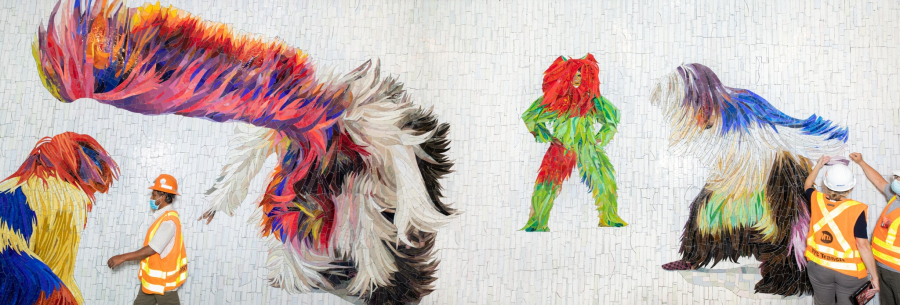
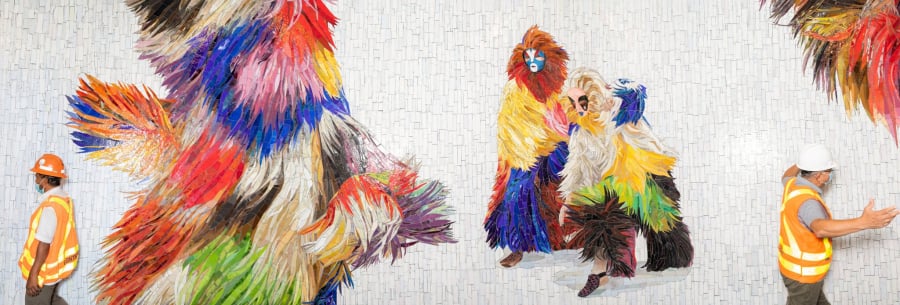
Two photos were combined by photographer Sinna Nasseri from small photos to capture the whole mosaic - Photo: Sinna Nasseri/NYT
And the makers printed out the designs to scale, laid them out on the table, and got to work. Cave’s mosaic was photorealistic, meaning the glass pieces were embedded directly onto the mesh backing, rather than creating a mirror-like reflection. “Which stone would go next, to create a unique dance?” Michael says of the process. His team cut the glass pieces, attached them to the mesh lining, and then gradually inlaid them onto the wall. The finished piece measured 43.5 meters on one side and 54.5 meters on the other, with 11 digital screens in between. Every 15 minutes, the screens played a video of dancers performing in Soundsuits.
Although this was Nick Cave's first time creating a mosaic, he was keen to revisit the style. "I was thinking about creating a mosaic sculpture that wasn't just mounted on the wall, but that existed in space, and you could walk around and look at it. Yeah, I was thinking about that from the moment I walked into that hallway," Cave says.

Photo: Scott Lynch/Gothamist
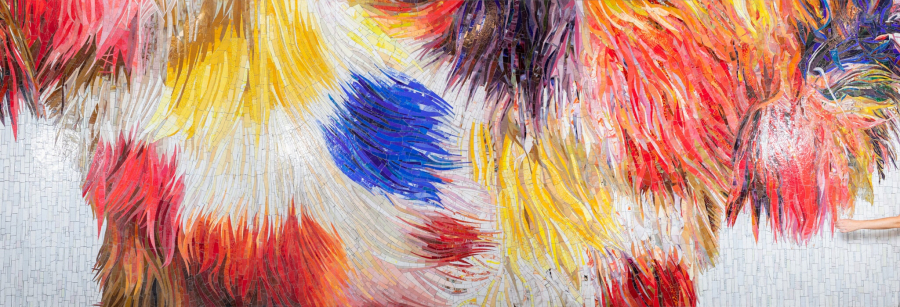
Photo: Sinna Nasseri/NYT
"Cave is an artist who is very connected to the community and also connected to people's emotions," said Sandra Bloodworth, longtime director of MTA Arts & Design, in an interview at Bryant Park. "And as we get back to normal and things start to get back on track and the city comes back to life, and we get to see the work of an artist like that, it's the perfect time."
Cave says Everyone is a work about movement. The glass dancers in raffia and fur Soundsuits reflect the hustle and bustle of the more than 100,000 people who used to catch the Route 42 shuttle every day before the pandemic—that’s 10,000 people an hour.

An MTA worker takes a photo of the mosaic - Photo: Sinna Nasseri/NYT

A worker smooths the edges of a mosaic. Photo: Sinna Nasseri/NYT

Photo: Sinna Nasseri/NYT
On that day in late August, the mosaic movement on the wall seemed to match the movement actually taking place in the hallway: a man in a hard hat was cutting through the stone with a waterjet cutter; another was carefully polishing the newly completed mosaic with glass cleaner and steel wool. Sweat was dripping from his face, and workers were bustling around, adding new mosaics to the wall.
“We are not just spectators,” Cave said, “but we are also part of the performance.”































